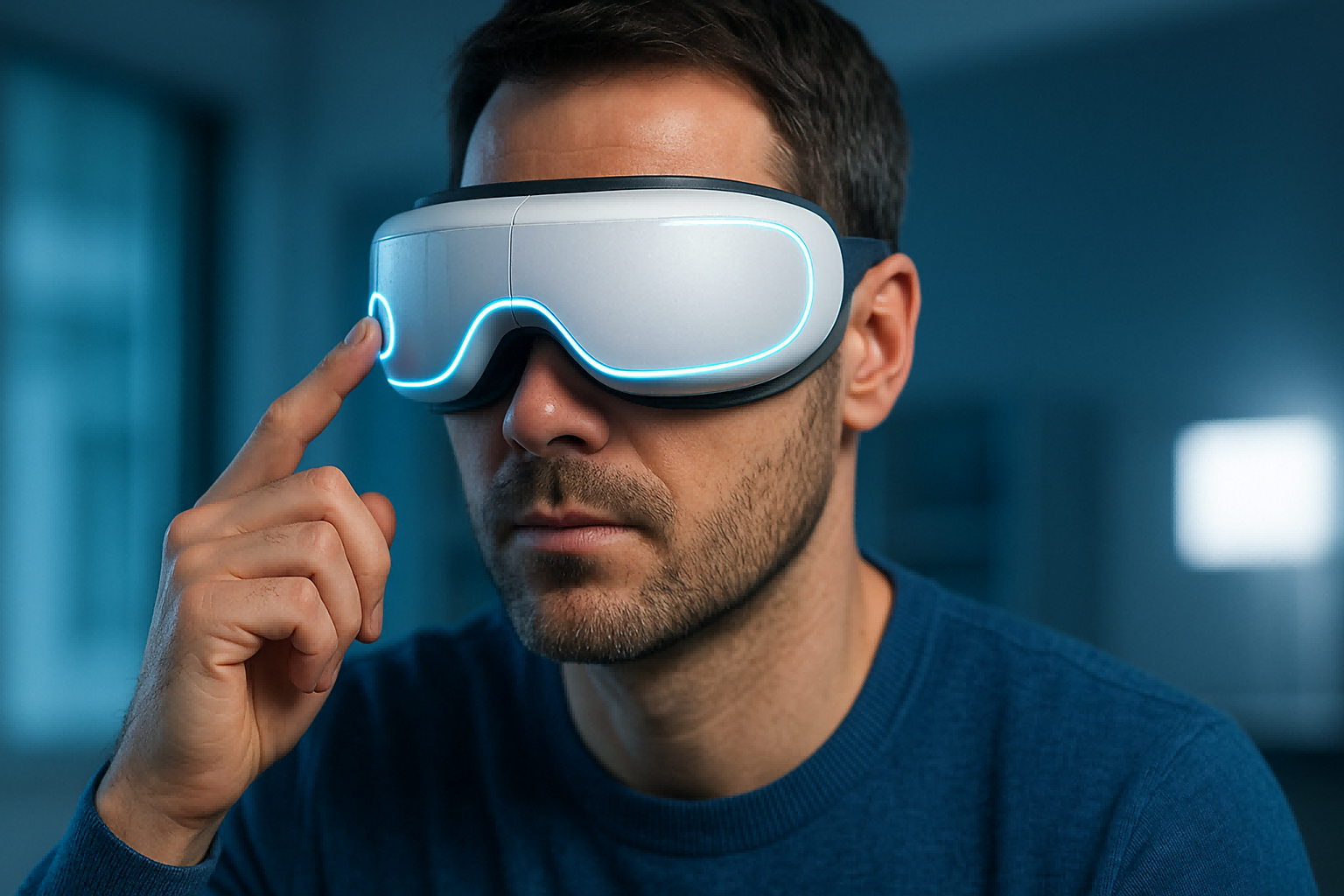Send My Projects Request
Personalized Optical Solutions: Why User-Controlled Energy Adjustment Is Safer and More Reliable
While many optical equipment companies highlight automated or AI-based adjustment systems, one important truth is often overlooked: the comfort and safety of optical eye-care devices depend far more on the user’s own perception than on automated algorithms.
The Skaphor Vision Revival Device does not rely on auto-adjusting brightness or frequency.
Instead, it uses a more stable and scientifically grounded approach—
fixed optical parameters + user-controlled energy intensity and session duration.
This article explains why manual adjustment provides a more reliable form of personalization, how fixed optical rhythms ensure safety, and how users can fine-tune energy levels based on their own comfort and visual needs.

1. Why “Automatic Adjustment” Is Not Ideal in Optical Eye-Care Devices
Many consumer devices claim to “automatically detect eye status” and adjust light output.
However, in real-world eye science, such automation is not reliable because:
1. Visual sensitivity and fatigue are highly subjective
Every user responds differently to light:
Some tolerate higher intensity
Others are sensitive to even mild brightness
Fatigue varies throughout the day
No algorithm can precisely interpret these subjective sensations.
2. Incorrect stimulation may cause discomfort or risks
Excessive or inappropriate light may lead to:
Tingling or sharp sensitivity
Temporary glare
Sleep rhythm disruption (if used at night)
These risks are similar to eye massager side effects, which often arise from over-stimulation or mechanical overuse.
Therefore, fixed and controlled optical output remains the safest method in professional eye-care systems.
2. Why the Skaphor Device Uses Fixed Optical Rhythms
The Skaphor Vision Revival Device uses predetermined, research-based optical settings:
Fixed intensity range within a safe biological window
Fixed frequency based on micropulse neuromodulation
Fixed pulse width aligned with retinal tolerance
These design choices mirror those used in medical-grade devices adopted by ophthalmic equipment companies and eye-care professionals.
Benefits of fixed parameters:
✔ Consistent safety with every session
✔ Stable optical rhythm that supports neural adaptation
✔ Better alignment with photobiomodulation studies
✔ No risk of algorithmic errors or excessive stimulation
3. Real Personalization Comes From Manual Adjustment—Not Automation
Personalization means giving the user control, not letting a program guess how their eyes feel.
The Skaphor device offers two adjustable elements:
① Energy intensity levels
② Session duration
Why is this superior?
1. Users know their own comfort better than any algorithm
Mild fatigue → low intensity
After long computer use → medium intensity
Severe tension or blurred vision → slightly higher intensity (within safe limits)
Only the user can judge comfort in real time.
2. Eye fatigue varies daily
Automated systems cannot account for fluctuations caused by:
Sleep quality
Screen time
Sensitivity changes
Environmental lighting
Manual adjustment adapts instantly to these changes.
3. Manual control prevents overstimulation
Automated systems may attempt to “correct” discomfort by increasing output, which can cause side effects—similar to eye massager side effects, such as:
Excessive pressure
Heat irritation
Over-relaxation of the muscles
Temporary dryness
Manual adjustment avoids these issues entirely.
4. How Manual Control Creates a Personalized Optical Plan
Personalization = stable optical rhythm + adjustable user parameters
Intensity Levels (Recommended Use):
Low: Sensitive users, mild fatigue, nighttime use
Medium: Routine screen fatigue, daily strain
High: Noticeable tension, heavy eyelids, reduced clarity
Duration (Recommended Use):
8 minutes: Pre-sleep relaxation
10–12 minutes: After screen work
15 minutes: Deep neuromodulation
20–25 minutes: Severe fatigue or extended recovery
This creates an adaptable and user-responsive optical routine without compromising safety.
5. Why Fixed Optical Modes + Manual Adjustment Are Scientifically Preferable
✔ Avoids wrong light dosage from automation
✔ Prevents overstimulation and discomfort
✔ Allows users to respond to real-time sensations
✔ Supports natural neural rhythms
✔ Aligns with how modern optical therapy is studied and validated
This combination is widely used in medical-grade optical devices from leading optical equipment companies.
Manual Adjustment Is a Form of High-Level Personalization
True personalization is:
Not algorithm-driven
Not unpredictable
Not dependent on machine estimation
Instead, it is:
✨ Safe — fixed optical patterns
✨ Flexible — user controls intensity and duration
✨ Accurate — adjusts to real sensations
✨ Scientifically grounded — aligned with photobiology & neuromodulation research
User involvement = the most reliable personalization method in optical eye care.
Recommended for you





FAQ
About Products
Does it support the cooperation of clinical organizations in research?
Open to clinical data cooperation, provide equipment and technical program support (need to sign MOU).
About Company
Can you provide me with the company's qualifications and patent certificates?
We can provide business license, Class II Medical Device Manufacturing Record Certificate, and a list of patents (in English and Chinese).
Do you have a medical device manufacturing license?
We hold a Class II Medical Device Manufacturing License issued by the Guangdong Pharmaceutical Administration (number can be verified).
Logistics and Customs Clearance
Is there any exclusive logistics program for large orders?
More than 500 units, we can provide dedicated logistics (including export customs clearance/destination country customs clearance).
Marketing Support
Is there any joint promotion subsidy?
Annual purchases of more than 10,000 units can apply for a 50% rebate on advertising costs.
-
Contact Us for More Details
-
-
For custom designs, competitive pricing, or strategic partnerships, reach out to us. We'll get back to you promptly—usually within 24 hours.
-
© 2025 Skaphor. All Rights Reserved.

zhu Juliy
Skaphor_ Juliy